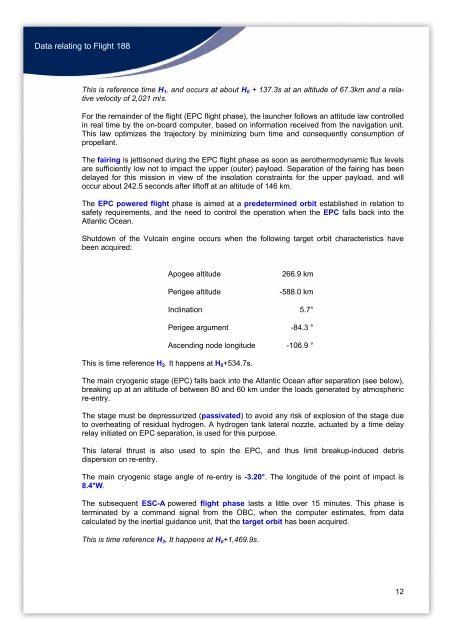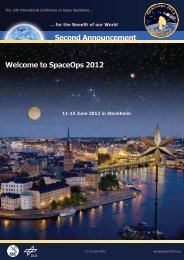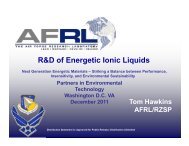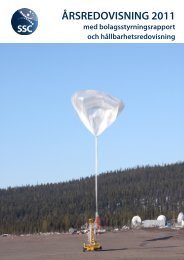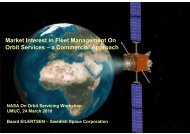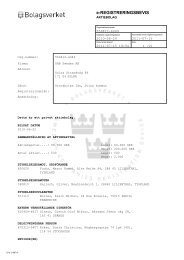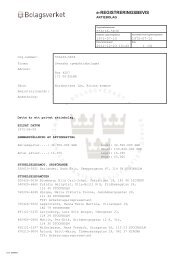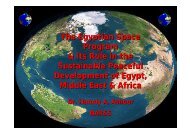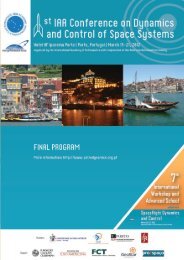Flight 188 - uppsagd
Flight 188 - uppsagd
Flight 188 - uppsagd
You also want an ePaper? Increase the reach of your titles
YUMPU automatically turns print PDFs into web optimized ePapers that Google loves.
Data relating to <strong>Flight</strong> <strong>188</strong>This is reference time H 1 , and occurs at about H 0 + 137.3s at an altitude of 67.3km and a relativevelocity of 2,021 m/s.For the remainder of the flight (EPC flight phase), the launcher follows an attitude law controlledin real time by the on-board computer, based on information received from the navigation unit.This law optimizes the trajectory by minimizing burn time and consequently consumption ofpropellant.The fairing is jettisoned during the EPC flight phase as soon as aerothermodynamic flux levelsare sufficiently low not to impact the upper (outer) payload. Separation of the fairing has beendelayed for this mission in view of the insolation constraints for the upper payload, and willoccur about 242.5 seconds after liftoff at an altitude of 146 km.The EPC powered flight phase is aimed at a predetermined orbit established in relation tosafety requirements, and the need to control the operation when the EPC falls back into theAtlantic Ocean.Shutdown of the Vulcain engine occurs when the following target orbit characteristics havebeen acquired:Apogee altitudePerigee altitude266.9 km-588.0 kmInclination 5.7°Perigee argument -84.3 °Ascending node longitude -106.9 °This is time reference H 2 . It happens at H 0 +534.7s.The main cryogenic stage (EPC) falls back into the Atlantic Ocean after separation (see below),breaking up at an altitude of between 80 and 60 km under the loads generated by atmosphericre-entry.The stage must be depressurized (passivated) to avoid any risk of explosion of the stage dueto overheating of residual hydrogen. A hydrogen tank lateral nozzle, actuated by a time delayrelay initiated on EPC separation, is used for this purpose.This lateral thrust is also used to spin the EPC, and thus limit breakup-induced debrisdispersion on re-entry.The main cryogenic stage angle of re-entry is -3.20°. The longitude of the point of impact is8.4°W.The subsequent ESC-A powered flight phase lasts a little over 15 minutes. This phase isterminated by a command signal from the OBC, when the computer estimates, from datacalculated by the inertial guidance unit, that the target orbit has been acquired.This is time reference H 3 . It happens at H 0 +1,469.9s.12


